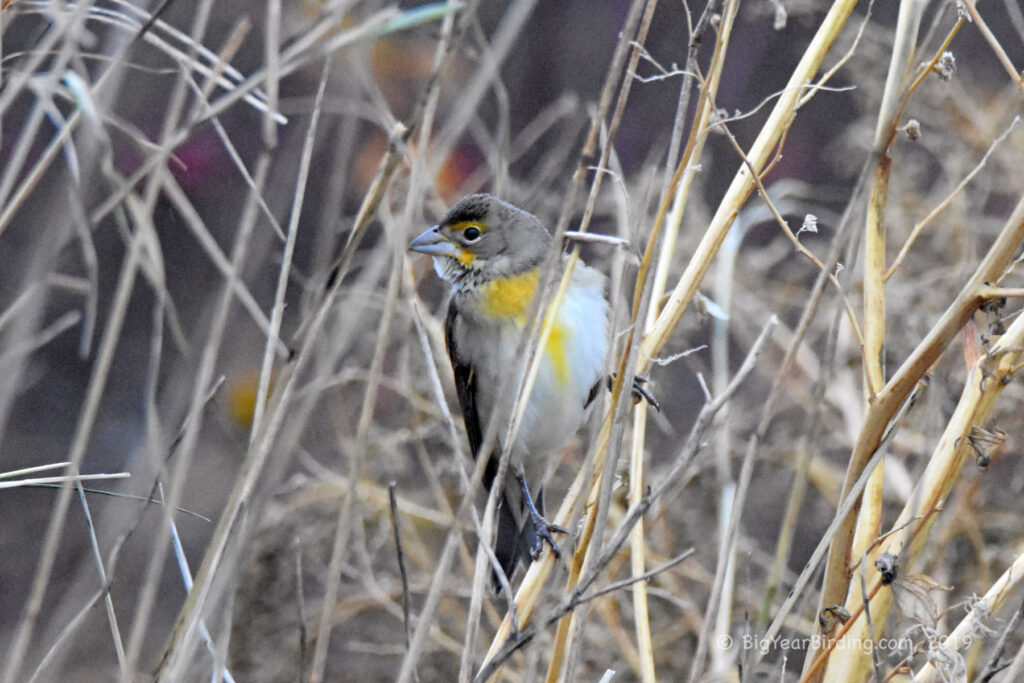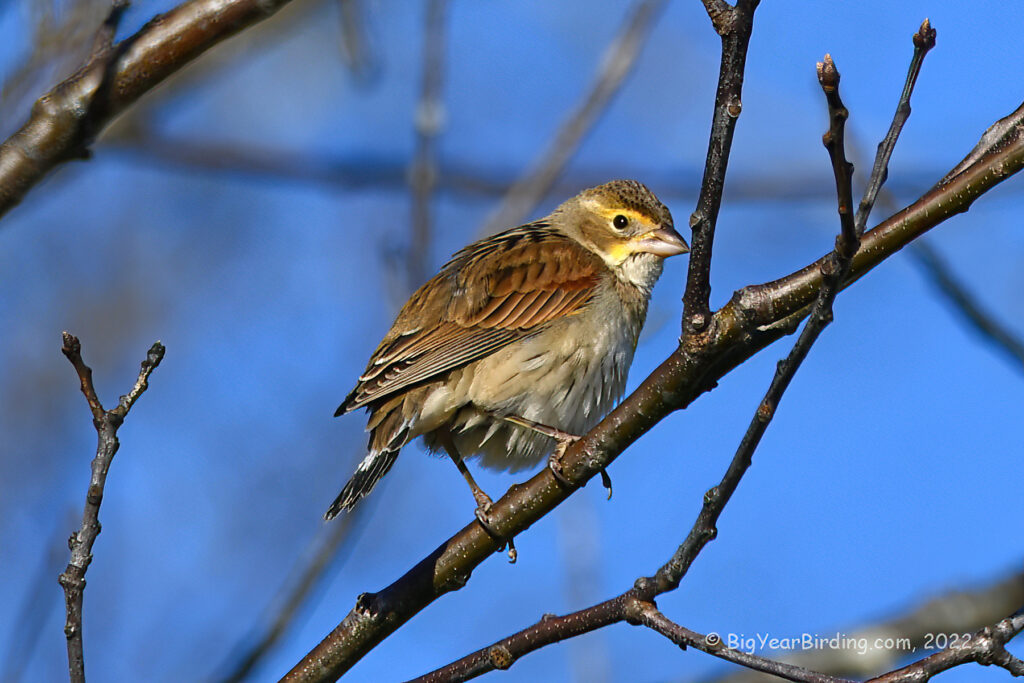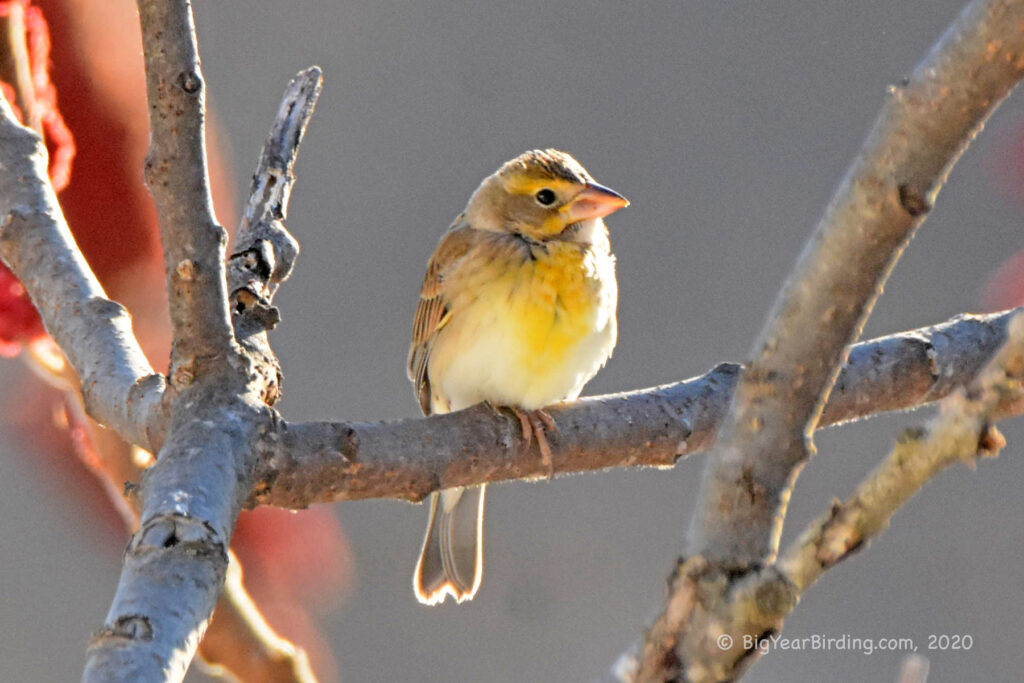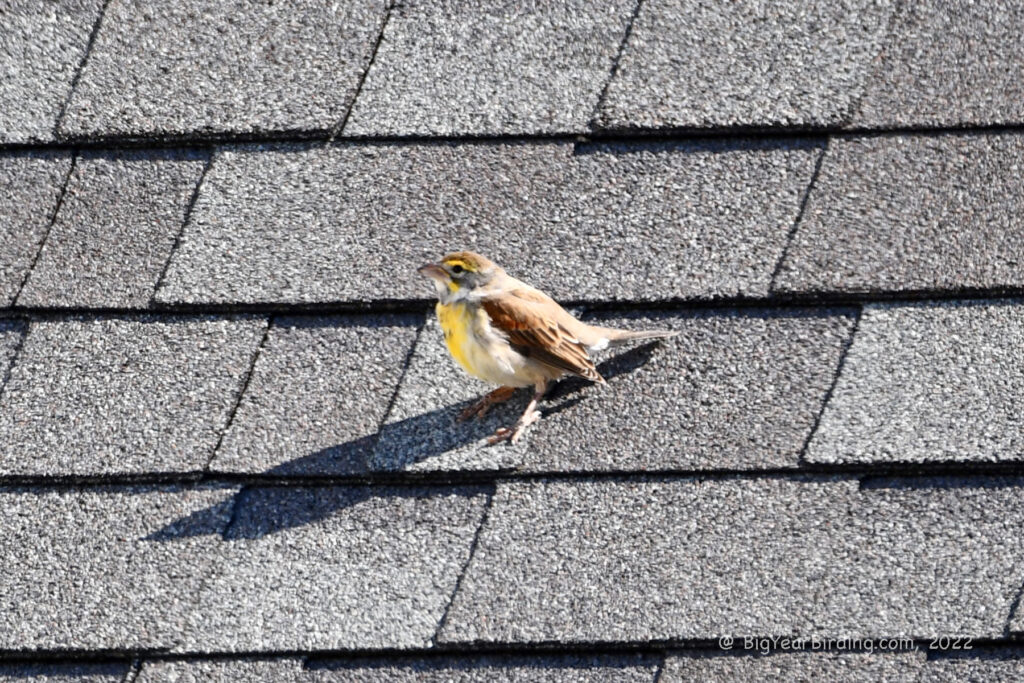
The Dickcissel is a small passerine bird that belongs to the family Cardinalidae. It measures about 5.5 to 6 inches in length and weighs around 0.6 to 0.9 ounces. This bird has a short, conical bill, a grayish-brown head, and a yellow breast with a black bib. Males have a black patch on the throat, while females have a light brown patch. The wings are brown with a white patch, and the tail is forked.

 One of the most distinguishing field marks of the Dickcissel is its distinctive song, which sounds like “dick-dick-ciss-ciss”. The song is usually heard during the breeding season, which is from May to August. This bird also has a call that sounds like “tsip” or “tseet”, which is used for communication and to maintain contact with other members of its species.
One of the most distinguishing field marks of the Dickcissel is its distinctive song, which sounds like “dick-dick-ciss-ciss”. The song is usually heard during the breeding season, which is from May to August. This bird also has a call that sounds like “tsip” or “tseet”, which is used for communication and to maintain contact with other members of its species.
The Dickcissel is a migratory bird that breeds in the central and eastern parts of North America, from southern Canada to northern Mexico. During the winter months, it migrates to South America, where it can be found in grasslands, agricultural fields, and other open areas. The migration of the Dickcissel is characterized by a significant north-south movement, and it is known to travel up to 1,800 miles to reach its wintering grounds.
In addition to its migration patterns, the Dickcissel is also known for its behavior during the breeding season. It is a solitary nester and usually builds its nest in grassy fields or meadows, using grasses and other plant materials. The female lays 3 to 5 eggs, which are incubated for about 12 to 13 days. The young birds fledge after 9 to 12 days and are independent after 2 to 3 weeks.

Overall, the Dickcissel is a fascinating bird with distinctive physical and behavioral characteristics. Its migration patterns and breeding habits make it an important species to study and protect, as it plays an essential role in the ecosystem of its native habitats.

